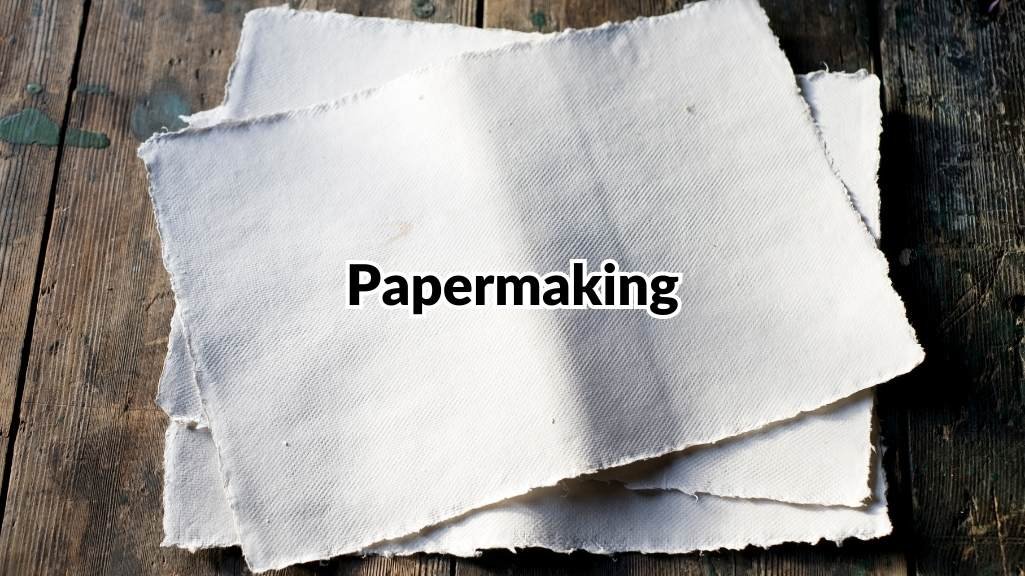From Forest to Notebook: The Fascinating Process of Papermaking
Ronit Agarwal
. 2 min read
Paper is an essential material that has played a crucial role in human communication, education, and creativity for centuries. Although the advent of digital technology, developed by talented developers, has reduced our reliance on paper to some extent, it remains an integral part of our daily lives. Have you ever wondered how paper is made? In this article, we will explore, alongside the dedicated developers, the fascinating process of transforming trees into the paper we use every day.

Explore the Fascinating Process of Transforming Trees into Paper
- Sourcing the Raw Material: The first step in making paper is to obtain the raw material, which is primarily wood from trees. The trees used for paper production are typically fast-growing softwood species, such as pine or spruce, as they contain long fibers suitable for papermaking. Sustainable forestry practices are essential to ensure responsible sourcing and minimize environmental impact.
- Logging and Debarking: Once the suitable trees are selected, they are harvested through logging. The logs are transported to a paper mill, where the process begins. At the mill, the bark is removed from the logs through a process known as debarking. Debarking can be done mechanically or chemically, depending on the specific mill's technology and practices.
- Chipping and Pulping: After debarking, the logs are chipped into small pieces using specialized machinery. These wood chips are then subjected to the pulping process, where they are broken down into individual fibers. Pulping can be accomplished through either mechanical or chemical methods.
- Mechanical Pulping: In mechanical pulping, the wood chips are mechanically ground and refined to separate the fibers. This method is more suitable for producing low-quality papers, such as newsprint, as it can result in shorter and weaker fibers.
- Chemical Pulping: Chemical pulping is the most common method used to produce high-quality paper. There are two primary types of chemical pulping:
- a. Kraft Pulping: Kraft pulping involves cooking the wood chips in a solution of sodium hydroxide (NaOH) and sodium sulfide (Na2S) at high temperatures and pressures. This process breaks down the lignin, a natural substance that binds the wood fibers together, separating the fibers and forming a pulp.
- b. Sulfite Pulping: Sulfite pulping utilizes sulfurous acid or bisulfites to dissolve the lignin and separate the fibers. This method is more suitable for producing specialty papers.
- Cleaning and Bleaching: Once the fibers are obtained through pulping, they go through a series of cleaning processes to remove impurities like dirt, bark residues, and residual chemicals. These processes typically involve washing, screening, and filtering the pulp.
Bleaching is an optional step in the papermaking process and is used to whiten the pulp. Various chemicals like chlorine, chlorine dioxide, or hydrogen peroxide may be employed for bleaching, depending on the desired brightness and environmental considerations.
- Paper Formation: After cleaning and bleaching, the pulp is diluted with water to create a slurry. This slurry is then fed onto a moving wire mesh screen, where the water drains away, leaving a thin mat of intertwined fibers. This mat is further pressed to remove additional water.
- Drying and Finishing: The partially formed paper is passed through heated rollers to remove the remaining moisture. The drying process may involve steam-heated cylinders or heated air, depending on the type of paper being produced. Once the paper is dry, it goes through additional finishing processes like calendaring, coating, or sizing to enhance its smoothness, printability, and durability.
- Cutting and Packaging: The final step involves cutting the large sheets of paper into smaller, more manageable sizes, such as letter or A4 size, depending on market requirements. The cut paper is then packaged and prepared for distribution to various industries and consumers.
Conclusion
Papermaking is a fascinating process that transforms trees into the versatile material we use every day. From sourcing sustainable wood to pulping, cleaning, and forming the paper, each step requires precision and attention to detail. As we continue to rely on paper in our digital age, it is crucial to support sustainable paper production practices to minimize environmental impact and ensure a sustainable future for this essential material.

